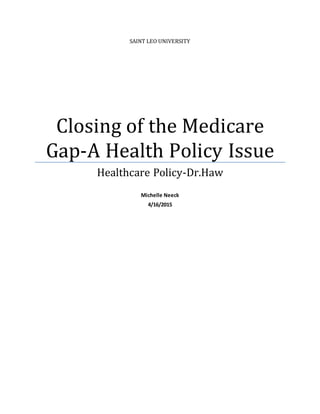The document discusses the history and current state of the Medicare coverage gap, also known as the "doughnut hole." It describes how the Affordable Care Act aims to gradually close the gap by 2020 through discounts on brand name drugs and increased coverage each year. However, some argue that 10 years is too long to close the gap and more needs to be done to help those who currently struggle to afford their medications. The implications of closing the gap on health, economic, and political factors are also examined.












